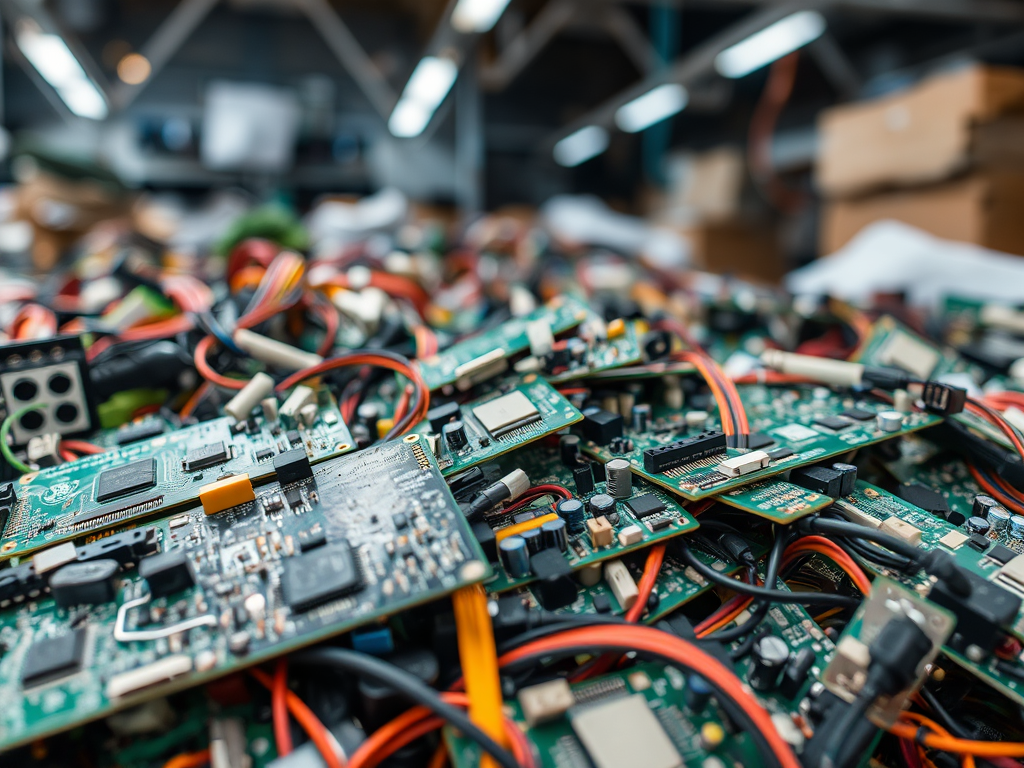
Revolutionary Flash Joule Heating Technology Transforms Rare Earth Element Recycling
Rice University scientists have achieved a groundbreaking advancement in rare earth element recycling that could reshape global supply chains and reduce dependence on environmentally destructive mining. The revolutionary technique, published in the Proceedings of the National Academy of Sciences on September 29, 2025, enables the extraction of critical rare earth elements from electronic waste in mere seconds with unprecedented efficiency.
Game-Changing Speed and Efficiency
The innovative method, developed by chemistry professor James Tour and postdoctoral researcher Shichen Xu, combines flash Joule heating with chlorine gas to recover rare earth elements from discarded magnets at extraordinary speeds. The process achieves over 90 percent purity and yield for rare earth element recovery in a single step, dramatically outperforming traditional recycling methods.
Flash Joule heating rapidly raises material temperatures to thousands of degrees Celsius within milliseconds, exploiting thermodynamic differences to selectively vaporize non-rare earth metals while preserving rare earth oxides. When combined with chlorine gas, the superheated metals react to form metal chlorides with boiling points hundreds of degrees lower than pure metals, allowing for easy separation.
“We’ve demonstrated that we can recover rare earth elements from electronic waste in seconds with minimal environmental footprint,” said Tour, emphasizing the transformative potential for securing resilient supply chains.
Dramatic Environmental and Economic Benefits
The comprehensive life cycle assessment and techno-economic analysis revealed the method’s remarkable sustainability advantages:
- 87 percent reduction in energy consumption
- 84 percent decrease in greenhouse gas emissions
- 54 percent reduction in operating costs
- 100 percent elimination of water and acid use
Traditional hydrometallurgical and pyrometallurgical recycling methods are notoriously energy-intensive and produce hazardous waste streams requiring extensive water and acid inputs. The Rice University breakthrough eliminates these environmental challenges entirely while completing extractions within seconds rather than hours or days.
Laboratory demonstrations on neodymium iron boron and samarium cobalt magnet waste achieved remarkable results, with samarium recovery at 94 percent purity and 95 percent yield, showcasing the process’s effectiveness across different magnet types.
Commercial Launch Targets Early 2026
Rice University has licensed the intellectual property to Flash Metals USA, a Texas-based startup company planning to enter production mode by the first quarter of 2026. The technology enables deployment of small or large recycling units locally near electronic waste collection sites, reducing shipping costs and environmental impact.
The Australian parent company Metallium has advanced its Technology Campus in Chambers County, Texas, with commissioning scheduled for December 2025. Flash Metals USA has secured additional permitted sites in Massachusetts and Virginia as part of its expansion strategy.
“What you see in this paper is going to be deployed within 6 months, unlike most things that you wait years and years for,” Tour emphasized, highlighting the rapid commercialization timeline.
Strategic Response to Supply Chain Vulnerabilities
The timing aligns with growing urgency around rare earth supply security. China maintains dominance over 90 percent of global rare earth processing capacity, with recent export restrictions in April 2025 highlighting critical supply vulnerabilities. China’s restrictions on seven rare earth elements—including samarium, gadolinium, terbium, dysprosium, and yttrium have already caused significant supply chain disruptions.
Export data from May 2025 shows China’s total exports of rare earth magnets fell by 74 percent year-over-year, with US-specific shipments plummeting by 93.3 percent. Trading prices for dysprosium and terbium have tripled in European markets following the restrictions.
The global rare earth recycling market, valued at approximately $601 million in 2025, is projected to reach $940 million by 2034, reflecting growing recognition of recycling’s strategic importance. However, less than one percent of rare earth elements is currently recycled globally, representing an enormous opportunity for improvement.
Addressing Exponential Demand Growth
This breakthrough addresses critical supply chain needs as demand for rare earth elements is expected to grow by 400 to 600 percent over the next two decades, driven by electric vehicles, wind turbines, and defense technologies. The clean energy transition requires massive deployments of technologies heavily dependent on rare earth materials.
A single 3-megawatt wind turbine can require up to 2 metric tonnes of rare earth magnets, while an F-35 fighter jet contains more than 900 pounds of rare earth elements. Global demand for neodymium alone is expected to exceed projected supply by 250 percent by 2030.
Modular Technology for Distributed Processing
The flash Joule heating method’s modular design enables flexible deployment across different scales and locations. This decentralized approach could revolutionize rare earth recycling by processing materials close to waste generation points, reducing transportation costs and emissions while building resilient local supply chains.
Flash Metals USA has already secured a $100,000 Department of Defense contract to demonstrate gallium recovery from LED scrap and other waste streams, with plans to pursue $1 million Phase II funding for pilot-scale deployment.
Building Domestic Critical Mineral Capacity
The technology represents a crucial step toward reducing American dependence on foreign rare earth sources while supporting domestic manufacturing capabilities. With China’s increasing restrictions and geopolitical tensions, establishing robust domestic recycling infrastructure has become a national security priority.
The Defense Advanced Research Projects Agency, Air Force Office of Scientific Research, and U.S. Army Corps of Engineers supported the research, underscoring its strategic importance for national defense applications.
This revolutionary advancement positions the United States to capture significant value from the massive volumes of electronic waste generated annually while securing critical materials for the clean energy transition. As Tour noted, “We already have the rare earth elements here. We don’t have to fight wars over this stuff. It’s already here we just need to realize that we can recycle it right here instead of throwing it away.”








